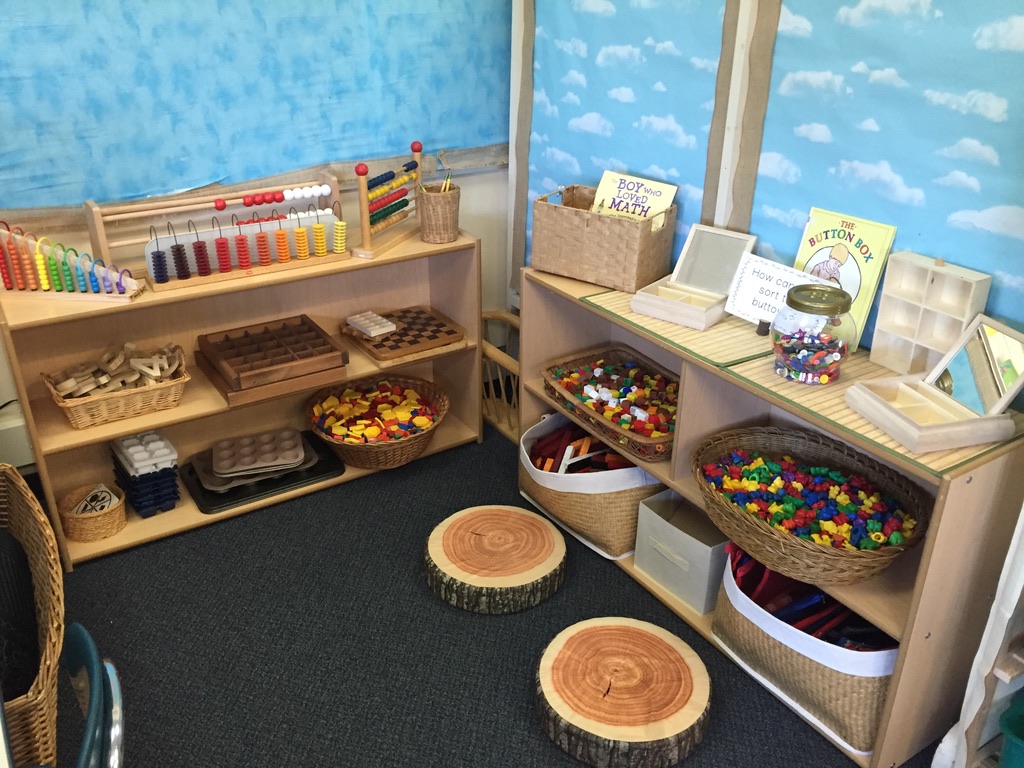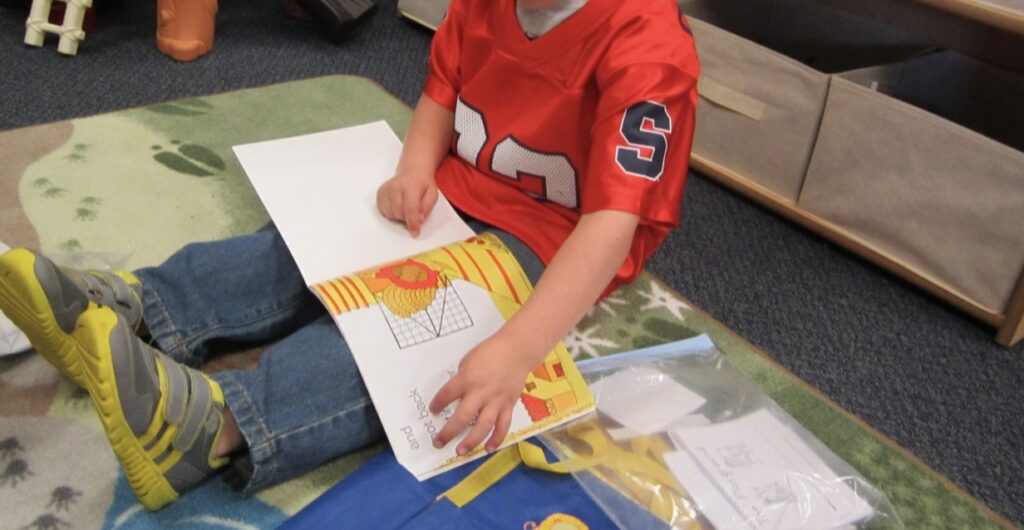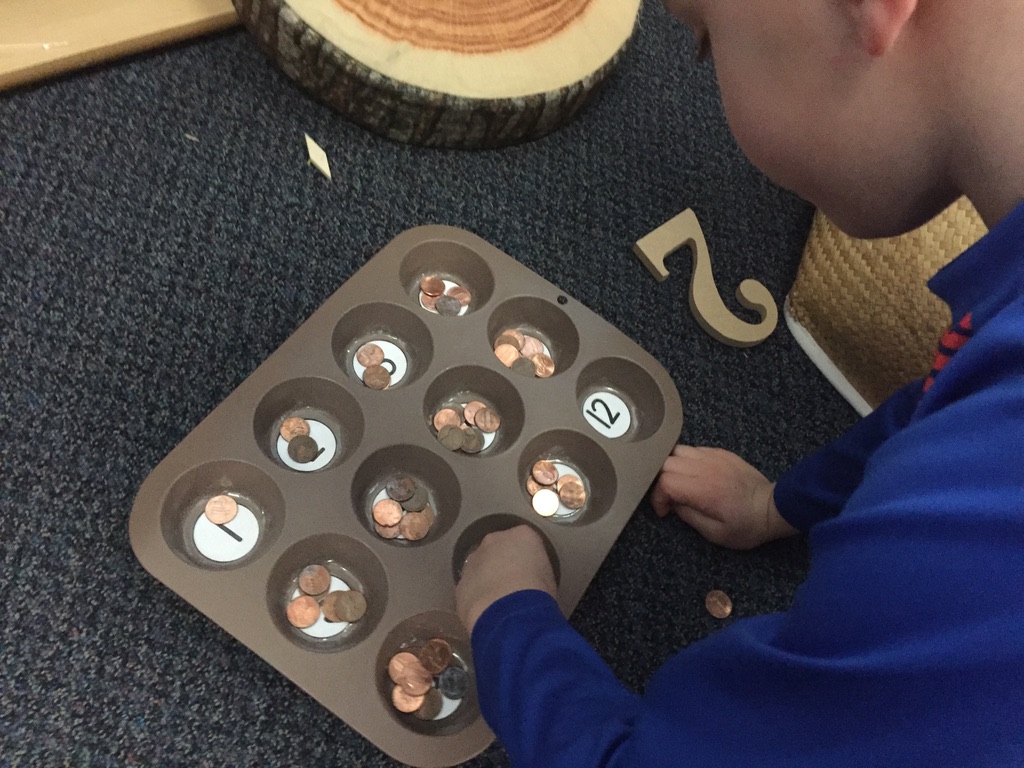Inside: In this post, I share ways to better use your centers to find options for alternative seating and flexible workspaces.
Making the Most of Our Classroom Space
One day it occurred to me that I was devoting a large part of our classroom space to a small portion of our day. Most of our day was spent at the carpet or tables, while the centers that surrounded the perimeter of our room remained empty.
I wanted to change that.

So, I began to think how I might better utilize our centers, so that the spaces could be used throughout the day and not just at the end, during Discovery Workshop. I wanted children to be able to use the physical space of each center during reading, writing, and math workshop, by transporting needed materials such as books, writing, or math games into each space.
I also needed to designate space for children who had attention and/or emotional needs to support them throughout the day.
As I looked around the classroom, I was able to identify 11 different spots that I could use for these purposes, most of which were already existing centers. I began to call them “workspaces,” to help children differentiate their use from what they had come to know as choice time centers.
Workspace Partners
The workspaces were of varying sizes, but each comfortably fit two children, which meant they could work in pairs. So, I assigned each child a partner, created cards for each workspace, and made a rotational chart that showed children where they would work each day.

Their partner stayed the same for 11 days, which was equal to the number of workspaces that we used. Once we finished a round, they were given a new partner. We referred to these as our “peanut butter and jelly” partners, with one student being peanut butter and the other jelly. These were used to determine who might be the first to read, share writing, or take the first turn in a math game.
Alternative Seating Options
Within each workspace, I included alternative seating options to give my kiddos some choices about where they sat. In some of the bigger spaces, I was able to include child-sized chairs or stools.


In smaller spaces, I added mats or cushions.


While working in each space, children freely chose either the available seating option or the surrounding carpeted area. They could also choose how they sat, criss cross, on their knees, or on their bellies – whichever was most comfortable for them.
Workspaces in Action
Now we use our workspaces in various ways throughout the school day. Here is a quick glimpse of how they are used.
After completing their arrival routines, children do morning tubs in their workspace.

During reading workshop, the workspaces become “book nooks” for reading.

Most children work at the tables for writing workshop, but the workspaces are always available for those who might prefer to do their writing there.

Children can also use their workspace for buddy reading or to share their writing with a partner.


At math time, the workspaces become the spot where they bring their math tubs.

Even assessments, such as our Show How You Grow pages, are sometimes done within our workspaces. When used for these purposes, I need to separate the children within the space, but find this is easily done.
From Work Spaces to Choice Time Centers
At the end of the day, during Discovery Workshop, the workspaces become choice time centers and the children do not have to go to their assigned work space to play, but rather have the freedom to choose the center that most matches their interest.

This block center, that may have been used as a workspace for reading or a math game during the day, now becomes a play center and the children are now able to use the materials stored within it, to build, create, and construct with others that share their interest.
Alternative Seating Interventions
One last way in which we use our workspaces is to provide alternative seating to meet individual needs. For example, if we are working at tables, and a student is having trouble concentrating and staying on task, I might suggest going to their workspace to help them find more success in completing their work. Their assigned workspace might also be used as a quiet zone or calming corner if needed throughout the day.

Additionally, any of the seating options, can be moved out of the workspaces and used at the carpet or at the tables to better support children.
Creating a More Flexible Classroom with Alternative Seating
Now those centers, that used to remain empty and waiting for the children to visit, are better utilized throughout our entire day as flexible workspaces and alternative seating options for reading, writing, and math as well as for children who might need a quieter spot to focus, work, or cool down.

Take a look around your own classroom and ask yourself these questions:
- Are there spaces that are being underutilized or could serve double duty as classroom work spaces?
- How many children could comfortably work in those spaces?
- During which parts of our day might we use these workspaces?
- Can I add alternative seating options to some of these spaces?
- How can I use these workspaces to support individual needs?
There’s no right or wrong way to use your classroom space, just several options that might help you utilize it more flexibly and better meet the needs of your children.
Classroom Setup Made Easy
Looking for some guidance on classroom setup? Download this free Classroom Setup Toolkit that will help you think through some of the decisions you’ll need to make before setting up your classroom space. You’ll find tips and tricks on classroom layout, colors and themes, furniture, wall decor, and materials and storage.
For more ideas on classroom set up and design, visit the Growing a Learning Space category in the Roots & Wings resource library.



 Room Tour: Play-Based Centers for Kindergarten Choice Time
Room Tour: Play-Based Centers for Kindergarten Choice Time Preschool Classroom Tour: The Waterfall Room
Preschool Classroom Tour: The Waterfall Room Science Center Activities That Your Kiddos Will Love
Science Center Activities That Your Kiddos Will Love Why I Don’t Have a Dramatic Play Center in My Kindergarten Classroom
Why I Don’t Have a Dramatic Play Center in My Kindergarten Classroom